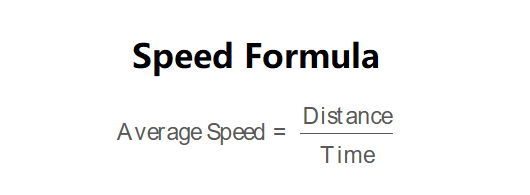1. What is a Speed Calculator?
Definition: This calculator determines the average speed of a moving object by dividing the distance traveled by the time taken.
Purpose: It is used to calculate average speed for activities like driving, jogging, or cycling, helping users plan travel or assess performance.
2. How Does the Calculator Work?
The calculator uses the following formula:
\[
\text{Average Speed} = \frac{\text{Distance}}{\text{Time}}
\]
Where:
- \(\text{Average Speed}\): Speed of the object (kph, convertible to mph, m/s, ft/s)
- \(\text{Distance}\): Distance traveled (km, convertible to miles, meters, feet)
- \(\text{Time}\): Time taken (hours, convertible to days, minutes, seconds)
Unit Conversions:
- Distance:
- 1 mile = 1.60934 km
- 1 km = 1000 meters
- 1 km = 3280.84 feet
- Time:
- 1 day = 24 hours
- 1 hour = 60 minutes
- 1 hour = 3600 seconds
- Speed:
- 1 kph = 0.621371 mph
- 1 kph = 0.277778 m/s
- 1 kph = 0.911344 ft/s
Steps:
- Enter the distance traveled, selecting the unit (km, miles, meters, feet).
- Enter the time taken, selecting the unit (days, hours, minutes, seconds).
- Optionally, enter a speed to compare and see the time difference, selecting the unit.
- Convert distance to km and time to hours if needed.
- Calculate the average speed in kph using the formula.
- Display the speed in the selected unit, with the ability to change the unit independently.
- If a compare speed is provided, calculate the time difference and display the compare speed in the selected unit.
3. Importance of Speed Calculation
Calculating average speed is crucial for:
- Travel Planning: Estimating travel time for trips.
- Performance Analysis: Assessing speed in activities like running or cycling.
- Efficiency: Comparing travel times at different speeds to optimize routes.
4. Using the Calculator
Examples:
- Example 1: For \(\text{Distance} = 100 \, \text{km}\), \(\text{Time} = 2 \, \text{hours}\):
- Average Speed: \(\text{Speed (kph)} = \frac{100}{2} = 50 \, \text{kph}\)
- In mph: \(\text{Speed} = 50 \times 0.621371 = 31.07 \, \text{mph}\)
- Example 2 (with Compare Speed): For \(\text{Distance} = 150 \, \text{miles}\), \(\text{Time} = 3 \, \text{hours}\), \(\text{Compare Speed} = 60 \, \text{mph}\):
- Convert: \(\text{Distance (km)} = 150 \times 1.60934 = 241.40 \, \text{km}\)
- Average Speed: \(\text{Speed (kph)} = \frac{241.40}{3} = 80.47 \, \text{kph}\)
- In mph: \(\text{Speed} = 80.47 \times 0.621371 = 50.00 \, \text{mph}\)
- Compare Speed in kph: \(\text{Compare Speed} = 60 \times 1.60934 = 96.56 \, \text{kph}\)
- Time at 60 mph: \(\text{Time} = \frac{241.40}{96.56} = 2.50 \, \text{hours}\)
- Time Difference: \(\text{Difference} = 3 - 2.50 = 0.50 \, \text{hours longer}\)
5. Frequently Asked Questions (FAQ)
Q: What is the difference between average speed and instantaneous speed?
A: Average speed is the total distance divided by total time, while instantaneous speed is the speed at a specific moment, like what a speedometer shows.
Q: Can distance or time be negative?
A: No, these values must be positive as they represent physical quantities.
Q: How accurate is the speed calculation?
A: The calculation is accurate for the given inputs but does not account for real-world factors like stops, acceleration, or road conditions.
 Home
Home
 Back
Back
